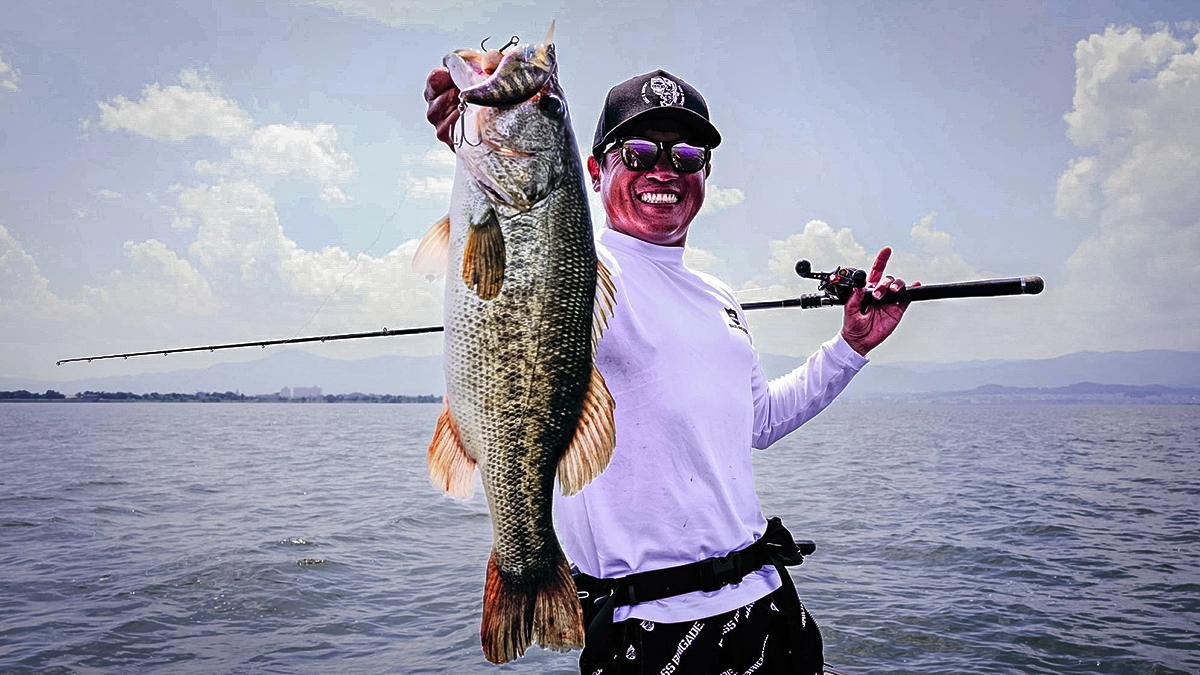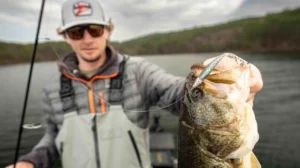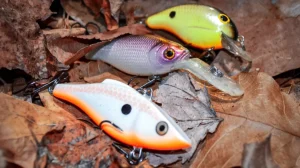Elite Series pro Kenta Kimura knows that fish feeding on big forage demand big baits to fool them. Whether the largemouths are chasing bluegills on Lake Biwa in his native Japan or gizzard shad throughout the American South, oversized lures are no longer taboo; they’re in demand and widely used. But sometimes, a big glide bait doesn’t have the triggering power to get big bass to bite.
Borrowing a page from the likes of monster deep diving crankbaits, Kimura worked with his sponsor, Deps, to build the Evoke 4.0 Squarebill Crankbait, the largest of that series of crankbaits.
“I caught so many big ones on the (Strike King) 10XD,” he said. “I thought it was because it goes deeper than others, but then I realized that it was the big profile.”
Indeed, this monster squarebill dwarfs even the other lures in its family. At the other end of the extreme, there’s the 1.2, which is just over 2 inches long and weighs 3/8 ounce. The 4.0 is almost an altogether different species; not only is it nearly twice as long and almost 2 ounces in weight, but it’ll hit 10 feet deep on a reasonably long cast.
“It has no rattles and no moving weight system, but you can still cast it 150 feet easily,” Kimura explained. While the company advertises that it has a tight wobble, Kimura is agnostic on whether that matters.
“I don’t care about the action,” he said. “All I care about is matching what they’re eating and the ability to burn it.”
A Need for Speed

Indeed, the need for warp speed operation was first evident to Kimura while guiding on record-producing Lake Biwa, which receives exceptional pressure. He’d taken to using a variety of sneaky techniques (some of them not appropriate for tournaments, like longlining) with his clients to catch teen-class fish. If he gave them something slow, they’d invariably reject it.
“I caught some little keepers in the fall that had 6 pounders trying to eat them,” he said. That’s when the lightbulb went on. He realized that they were keyed in on big bait, but it was also the fast retrieve that made a difference, and while he had glide baits that represented bluegills and baby bass, he couldn’t burn them.
“A crankbait doesn’t have those limitations,” he said. “It’s stable at any speed and you can fish it around any cover.”
At Grand Lake, for which he developed special limited edition craw patterns prior to the 2024 Bassmaster Classic, he used the 4.0 around rock. On Texas lakes like Sam Rayburn and Toledo Bend, it has produced for him in and around standing timber. He said that he wouldn’t hesitate to throw it up north, except for the fact that fish up there tend not to be as pressured, and can succumb to lures that are easier to work.
No Special Tackle Needed
While the Evoke 4.0 may be as big as some swimbaits and glide baits, Kimura fishes it on tackle that you probably already own, beginning with a soft fiberglass rod instead of one made of graphite.
“You don’t have to use a big swimbait rod,” he said. “And when you use a glass rod, the fish doesn’t shake its head as much. That softer rod keeps the fish calm.”
He pairs it with a 200-size reel, the better to fire out lengthy casts that allow him to cover water and maximize depth. In this era of 8:1, 9:1 and 10:1 reels, it might seem logical that to get the most out of this lure a faster reel would be better, but he said that a 5.8:1 or 6.2:1 reel holds up to the beating better, and has the power to tame bigger fish.
He’ll spool it up with 16- or 20-pound fluorocarbon, going heavier if he knows that he’s around a substantial number of 7-plus pound bass.
“You can’t reel it too fast for a bass,” he said. “If they miss it, just keep reeling. Most of the time they’ll eat it on the second shot.”
He also makes sure that his hooks are razor sharp, and checks them frequently after bouncing off of heavy cover. If necessary, he’ll replace them with size 1/0 Ryugi trebles.
While the lure does get hung up occasionally, he said that it’s buoyant like balsa. If he hits cover, he’ll stop, let the lure rise over, and will often get bit at that point in time.
“Before I didn’t want to hit cover with a big bait and now I can,” he added.
He said that most anglers equate squarebills, and particularly big ones, with muddy water, but in his experience, he says this lure works even better in clear water, as long as the fish are of the right caliber.
He’ll dote on it when he knows there are a substantial number of fish over the 4-pound mark in the area.
He’s already started to bother folks — it’s hard to tell whether he’s serious or not — for an even larger 5.0 or 6.0 model. While the market may not demand it, he’s sure that an even larger profile that’s just as steady at high speeds could be a valuable tournament tool. It may be situational, but there are times when size and speed are the ticket to a better class of fish.












